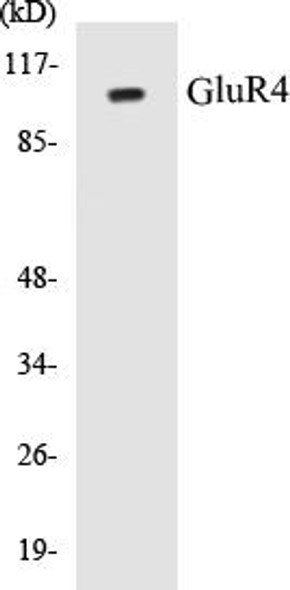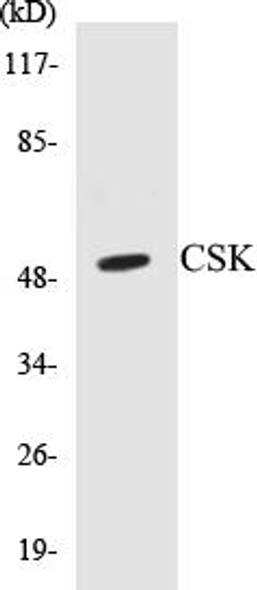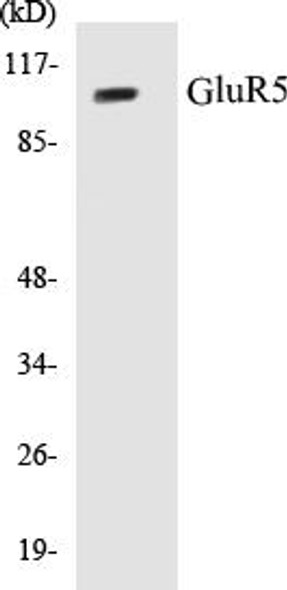Description
MCM5 Colorimetric Cell-Based ELISA Kit
The Human MCM5 Colorimetric Cell-Based ELISA Kit is a highly sensitive and specific assay designed for the accurate detection of MCM5 levels in cell lysates, serum, and plasma samples. This kit provides reliable and reproducible results, making it ideal for a variety of research applications.MCM5 is a key protein involved in DNA replication and cell proliferation, making it a valuable biomarker for studying various diseases and conditions, including cancer, genetic disorders, and developmental abnormalities.
By accurately measuring MCM5 levels, researchers can gain insight into cellular processes and potentially develop new therapeutic approaches.Overall, the Human MCM5 Colorimetric Cell-Based ELISA Kit offers researchers a powerful tool for studying DNA replication and cell cycle regulation, with the potential to contribute to advancements in biomedical research and clinical diagnostics.
| Product Name: | MCM5 Colorimetric Cell-Based ELISA |
| Product Code: | CBCAB00748 |
| ELISA Type: | Cell-Based |
| Target: | MCM5 |
| Reactivity: | Human, Mouse, Rat |
| Dynamic Range: | > 5000 Cells |
| Detection Method: | Colorimetric 450 nmStorage/Stability:4°C/6 Months |
| Format: | 96-Well Microplate |
The MCM5 Colorimetric Cell-Based ELISA Kit is a convenient, lysate-free, high throughput and sensitive assay kit that can detect MCM5 protein expression profile in cells. The kit can be used for measuring the relative amounts of MCM5 in cultured cells as well as screening for the effects that various treatments, inhibitors (ie siRNA or chemicals), or activators have on MCM5.
Qualitative determination of MCM5 concentration is achieved by an indirect ELISA format. In essence, MCM5 is captured by MCM5-specific primary antibodies while the HRP-conjugated secondary antibodies bind the Fc region of the primary antibody. Through this binding, the HRP enzyme conjugated to the secondary antibody can catalyze a colorimetric reaction upon substrate addition. Due to the qualitative nature of the Cell-Based ELISA, multiple normalization methods are needed:
| 1. | A monoclonal antibody specific for human GAPDH is included to serve as an internal positive control in normalizing the target absorbance values. |
| 2. | Following the colorimetric measurement of HRP activity via substrate addition, the Crystal Violet whole-cell staining method may be used to determine cell density. After staining, the results can be analysed by normalizing the absorbance values to cell amounts, by which the plating difference can be adjusted. |
| Database Information: | Gene ID: 4174, UniProt ID: P33992, OMIM: 602696, Unigene: Hs.517582 |
| Gene Symbol: | MCM5 |
| Sub Type: | None |
| UniProt Protein Function: | MCM5: Acts as component of the MCM2-7 complex (MCM complex) which is the putative replicative helicase essential for 'once per cell cycle' DNA replication initiation and elongation in eukaryotic cells. The active ATPase sites in the MCM2-7 ring are formed through the interaction surfaces of two neighboring subunits such that a critical structure of a conserved arginine finger motif is provided in trans relative to the ATP-binding site of the Walker A box of the adjacent subunit. The six ATPase active sites, however, are likely to contribute differentially to the complex helicase activity. Interacts with MCMBP. Belongs to the MCM family. |
| UniProt Protein Details: | Protein type:Cell cycle regulation; EC 3.6.4.12 Chromosomal Location of Human Ortholog: 22q13.1 Cellular Component: nucleoplasm; MCM complex; membrane; nucleus Molecular Function:DNA helicase activity; protein binding; DNA binding; ATP binding Biological Process: DNA replication initiation; DNA strand elongation during DNA replication; mitotic cell cycle; DNA replication; DNA duplex unwinding; G1/S transition of mitotic cell cycle |
| NCBI Summary: | The protein encoded by this gene is structurally very similar to the CDC46 protein from S. cerevisiae, a protein involved in the initiation of DNA replication. The encoded protein is a member of the MCM family of chromatin-binding proteins and can interact with at least two other members of this family. The encoded protein is upregulated in the transition from the G0 to G1/S phase of the cell cycle and may actively participate in cell cycle regulation. [provided by RefSeq, Jul 2008] |
| UniProt Code: | P33992 |
| NCBI GenInfo Identifier: | 19858646 |
| NCBI Gene ID: | 4174 |
| NCBI Accession: | P33992.5 |
| UniProt Secondary Accession: | P33992,O60785, Q14578, Q9BTJ4, Q9BWL8, |
| UniProt Related Accession: | P33992 |
| Molecular Weight: | 82,286 Da |
| NCBI Full Name: | DNA replication licensing factor MCM5 |
| NCBI Synonym Full Names: | minichromosome maintenance complex component 5 |
| NCBI Official Symbol: | MCM5 |
| NCBI Official Synonym Symbols: | CDC46; P1-CDC46 |
| NCBI Protein Information: | DNA replication licensing factor MCM5; CDC46 homolog; minichromosome maintenance deficient 5 (cell division cycle 46); MCM5 minichromosome maintenance deficient 5, cell division cycle 46 |
| UniProt Protein Name: | DNA replication licensing factor MCM5 |
| UniProt Synonym Protein Names: | CDC46 homolog; P1-CDC46 |
| Protein Family: | Minichromosome maintenance protein |
| UniProt Gene Name: | MCM5 |
| UniProt Entry Name: | MCM5_HUMAN |
| Component | Quantity |
| 96-Well Cell Culture Clear-Bottom Microplate | 2 plates |
| 10X TBS | 24 mL |
| Quenching Buffer | 24 mL |
| Blocking Buffer | 50 mL |
| 15X Wash Buffer | 50 mL |
| Primary Antibody Diluent | 12 mL |
| 100x Anti-Phospho Target Antibody | 60 µL |
| 100x Anti-Target Antibody | 60 µL |
| Anti-GAPDH Antibody | 60 µL |
| HRP-Conjugated Anti-Rabbit IgG Antibody | 12 mL |
| HRP-Conjugated Anti-Mouse IgG Antibody | 12 mL |
| SDS Solution | 12 mL |
| Stop Solution | 24 mL |
| Ready-to-Use Substrate | 12 mL |
| Crystal Violet Solution | 12 mL |
| Adhesive Plate Seals | 2 seals |
The following materials and/or equipment are NOT provided in this kit but are necessary to successfully conduct the experiment:
- Microplate reader able to measure absorbance at 450 nm and/or 595 nm for Crystal Violet Cell Staining (Optional)
- Micropipettes with capability of measuring volumes ranging from 1 µL to 1 ml
- 37% formaldehyde (Sigma Cat# F-8775) or formaldehyde from other sources
- Squirt bottle, manifold dispenser, multichannel pipette reservoir or automated microplate washer
- Graph paper or computer software capable of generating or displaying logarithmic functions
- Absorbent papers or vacuum aspirator
- Test tubes or microfuge tubes capable of storing ≥1 ml
- Poly-L-Lysine (Sigma Cat# P4832 for suspension cells)
- Orbital shaker (optional)
- Deionized or sterile water
*Note: Protocols are specific to each batch/lot. For the correct instructions please follow the protocol included in your kit.
| Step | Procedure |
| 1. | Seed 200 µL of 20,000 adherent cells in culture medium in each well of a 96-well plate. The plates included in the kit are sterile and treated for cell culture. For suspension cells and loosely attached cells, coat the plates with 100 µL of 10 µg/ml Poly-L-Lysine (not included) to each well of a 96-well plate for 30 minutes at 37°C prior to adding cells. |
| 2. | Incubate the cells for overnight at 37°C, 5% CO2. |
| 3. | Treat the cells as desired. |
| 4. | Remove the cell culture medium and rinse with 200 µL of 1x TBS, twice. |
| 5. | Fix the cells by incubating with 100 µL of Fixing Solution for 20 minutes at room temperature. The 4% formaldehyde is used for adherent cells and 8% formaldehyde is used for suspension cells and loosely attached cells. |
| 6. | Remove the Fixing Solution and wash the plate 3 times with 200 µL 1x Wash Buffer for five minutes each time with gentle shaking on the orbital shaker. The plate can be stored at 4°C for a week. |
| 7. | Add 100 µL of Quenching Buffer and incubate for 20 minutes at room temperature. |
| 8. | Wash the plate 3 times with 1x Wash Buffer for 5 minutes each time. |
| 9. | Add 200 µL of Blocking Buffer and incubate for 1 hour at room temperature. |
| 10. | Wash 3 times with 200 µL of 1x Wash Buffer for 5 minutes each time. |
| 11. | Add 50 µL of 1x primary antibodies (Anti-MCM5 Antibody and/or Anti-GAPDH Antibody) to the corresponding wells, cover with Parafilm and incubate for 16 hours (overnight) at 4°C. If the target expression is known to be high, incubate for 2 hours at room temperature. |
| 12. | Wash 3 times with 200 µL of 1x Wash Buffer for 5 minutes each time. |
| 13. | Add 50 µL of 1x secondary antibodies (HRP-Conjugated AntiRabbit IgG Antibody or HRP-Conjugated Anti-Mouse IgG Antibody) to corresponding wells and incubate for 1.5 hours at room temperature. |
| 14. | Wash 3 times with 200 µL of 1x Wash Buffer for 5 minutes each time. |
| 15. | Add 50 µL of Ready-to-Use Substrate to each well and incubate for 30 minutes at room temperature in the dark. |
| 16. | Add 50 µL of Stop Solution to each well and read OD at 450 nm immediately using the microplate reader. |
(Additional Crystal Violet staining may be performed if desired – details of this may be found in the kit technical manual.)






